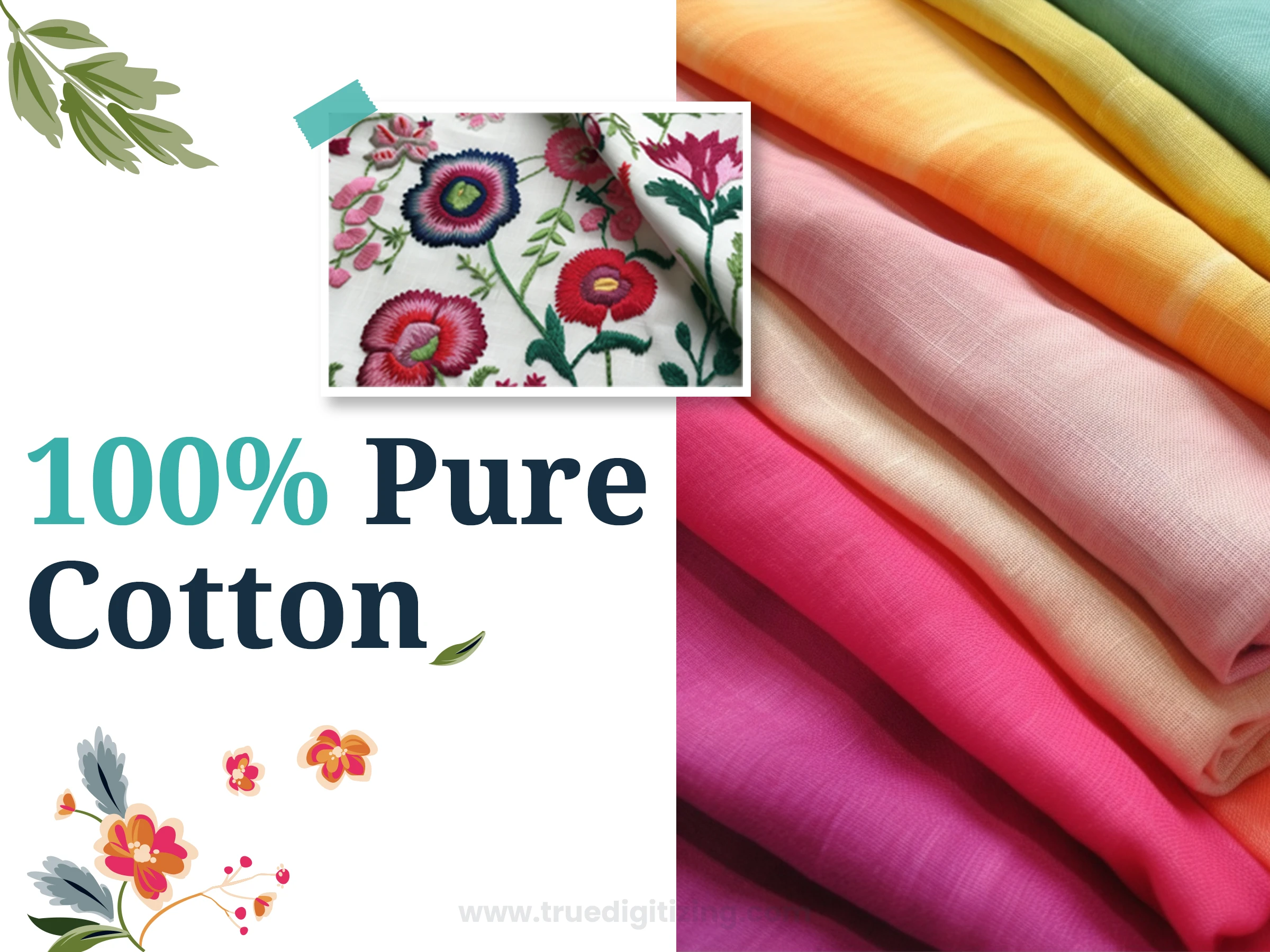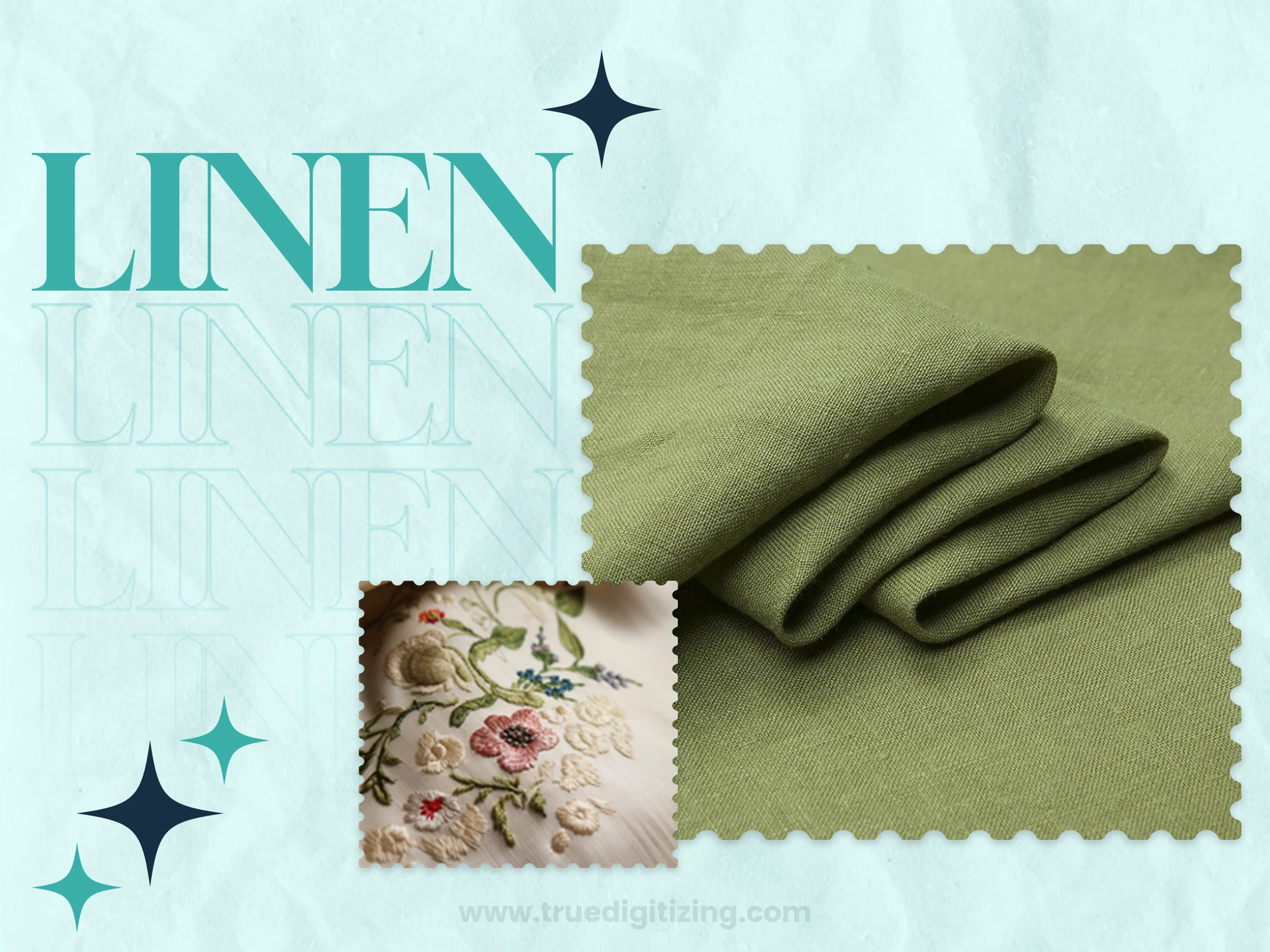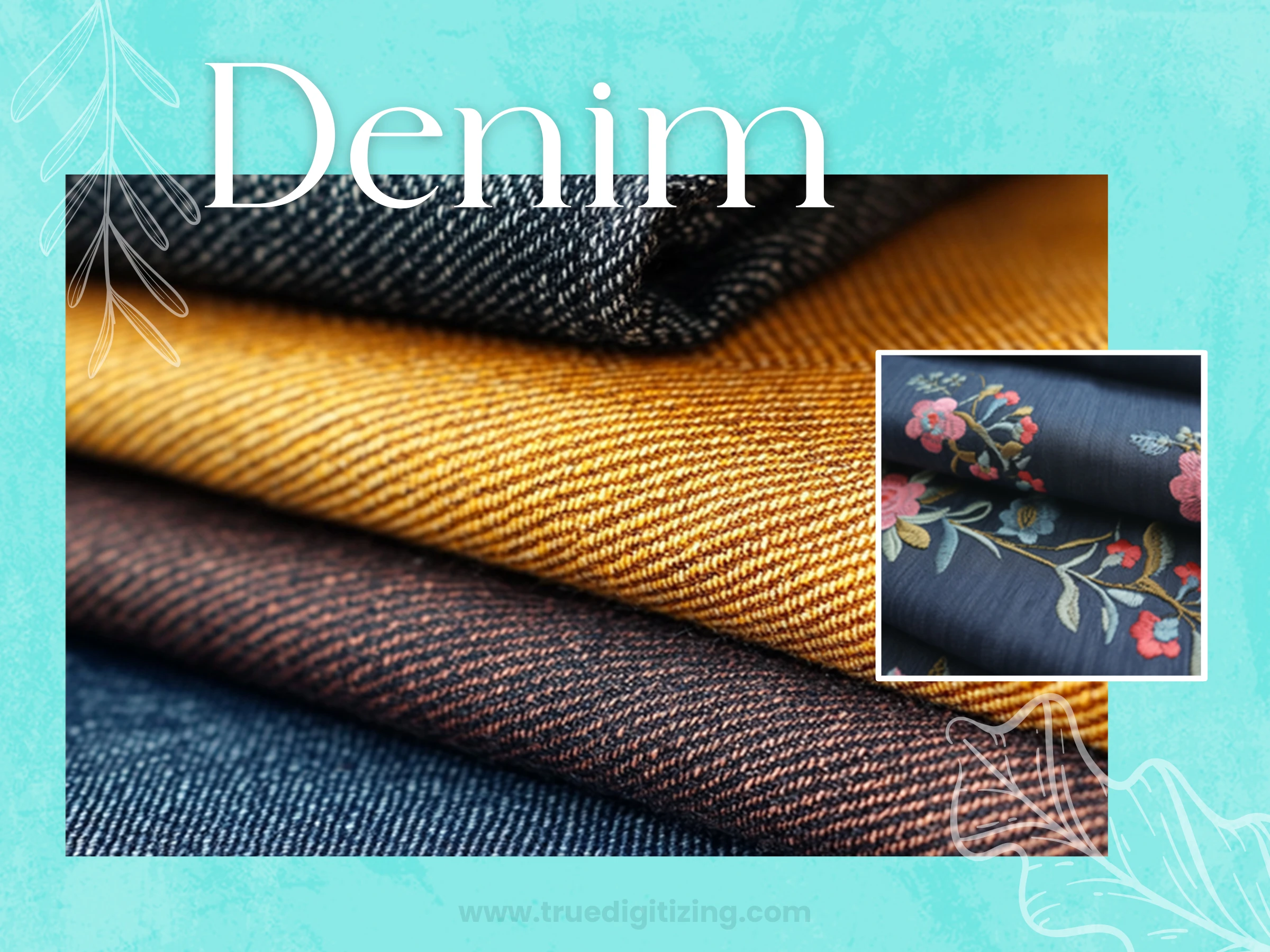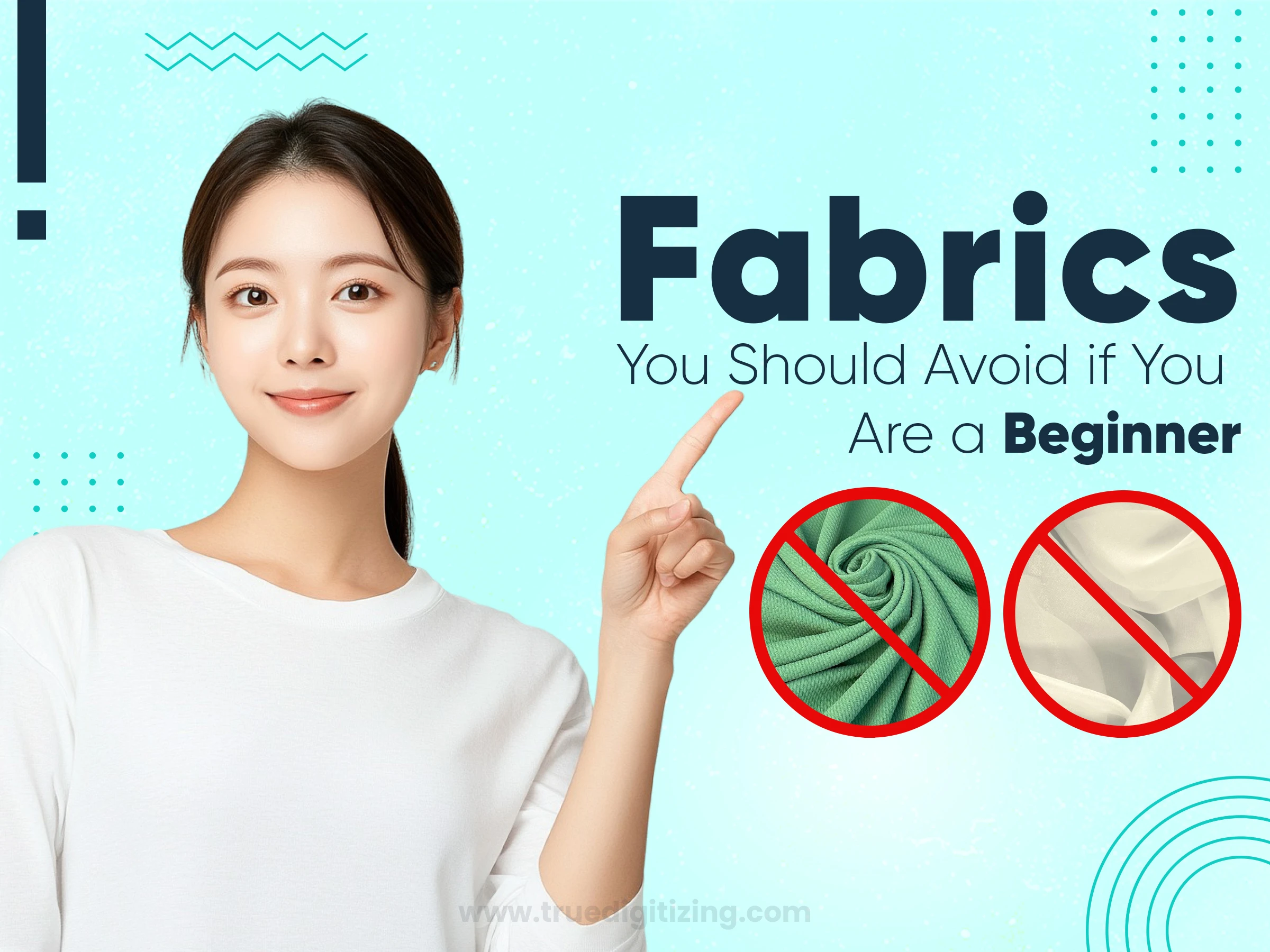

Cotton is hands-down a top pick for embroidery, and it’s easy to hold. It’s soft, strong, and super friendly with embroidery machines. The smooth texture lets the needle slide right through, giving you neat, sharp stitches every time. Plus, you can find it anywhere, and it comes in different weights. Light stuff for quilting or thicker options like canvas.
I’ve got a soft place for cotton myself. When I first tried embroidery digitizing years ago, I took some cotton to stitch a small flower design on a tote bag for a friend’s birthday. It turned out so nice, the stitches looked great, and there wasn’t any weird puckering. It’s a forgiving fabric, which is perfect if you’re still figuring out how to tweak your machine’s tension.
Cotton is pretty easy to work with, but here’s how to nail it:
Pick a medium-weight cotton (about 4-6 oz) so it’s stable.
Wash it first because you don’t want it shrinking after you’ve stitched something.
Use a stabilizer (tear-away or cut-away works) to stop it from stretching.
Set your machine to a medium speed and take a sharp needle (size 75/11 is perfect).
Hoop it tight. Cotton likes to be snug while you stitch.

Linen is another good option, especially if you want a natural, slightly textured vibe. It’s rougher than cotton, which gives your designs a cozy, rustic feel. It’s tough too, so it’s perfect for stuff like table runners, napkins, or even little details on clothes. And the best part? It gets softer every time you wash it, making it a solid choice for things you want to keep forever.
Linen can be tricky, so here’s what to look for:
Go for medium-weight (5-7 oz), too light, and it might rip; too heavy, and it’s stiff.
Stick to a smooth weave. Highly rough or loose ones that stick.
Wash it first to soften it up and remove shrinking.
Add a stabilizer to keep it in place. (Note: try a water-soluble topping for fancy designs. It makes the stitches pop on that texture.)

Denim may not scream "embroidery" at first look, but believe me, it's perfect for vibrant projects. It's thick and strong, hence, it's perfect for brightening up jackets, bags, or pants. It can handle heavy stuff like 3D puff or chenille without falling apart. And honestly, denim with some cool stitching just looks so good.
Note: Denim is tough on needles, so use a strong one (like 90/14 or 100/16) and take it slow. Throw in a cut-away stabilizer for support, especially with large and dense designs. You’ll end up with stitches that really stand out against that classic denim look.

If you’re new to this, some fabrics are just trouble waiting to happen. Here’s what to skip:
Stretchy stuff like spandex or jersey: It’ll twist your design in no time.
Super thin fabrics like chiffon or silk: They break easily and need pro-level stabilizing.
Thick ones like heavy wool or leather: They’re hard to hoop and can mess with your machine.
Stick with simple options like cotton or linen until you’ve got the hang of things.
By the way, if you are a newbie and curious about which is the best embroidery machine for beginners and if you know about the best embroidery machine and want to know how to use embroidery machine so these blog posts just for you.
Embroidery digitizing is not always easy. Maybe your fabric’s puckering, or the stitches are skipping, or your design just looks off. We’ve all been there! The key is picking a fabric that matches your design and tweaking your machine settings correctly. However, if it's making you crazy, why not let some experts take over? That’s where True Digitizing comes in. Let us digitize your embroidery designs at cheap rates. We digitize different embroidery designs like custom embroidery designs, appliqué designs, chenille, 3D puff, photo digitizing, and more. We also provide vector tracing service. So what are you waiting for? Let us sort it out while you focus on the fun part. Creating something cool.
Choosing the best fabric for embroidery is all about finding what is best for you and your project. Cotton, linen, and denim are my top three because they’re so different but so reliable. Cotton is soft and easy, linen has that earthy charm, and denim brings the toughness for big, bold ideas. A little prep like washing the fabric or choosing the right stabilizer goes a long way to making sure everything works out perfecly.
Nowadays, sustainable materials like pure cotton and denim are popular among embroidery lovers. They’re not just good for your projects, they’re good for the environment, which feels pretty nice. If you’re just starting, take it easy and avoid the tricky fabrics for now. If you’ve been at it a while, play around a bit, just make sure your machine’s up for it with the right needles and settings.
Embroidery is all about converting your ideas into something real, stitch by stitch. Whether it’s a gift for someone special, a logo for your side business, or just something to mess around with, the right fabric is your starting point. So take your hoop, select the best from these, and get going. And if digitizing is stressing you out,True Digitizing has got your back with affordable, quality designs. We provide quality work to our clients. Here is to making something awesome.
happy stitching!
Nick William has been immersed in the world of embroidery digitizing for over 20 years, earning 25 industry awards throughout his career. As a 3rd generation embroidery expert, Nick’s journey started in his family’s workshop, where he learned the art of digitizing before the rise of modern software. He has worked with leading commercial embroidery businesses and has shared his expertise with over 75,000 home and professional embroiderers. As an author at True Digitizing, Nick is passionate about teaching others how to create beautiful, precise designs through easy-to-follow tutorials and expert advice.
Categories

Is SVG A Vector File? Here’s the Shocking Truth Everyone Should Know
17-04-2025

6 Popular Types of Vector Files 2025
16-04-2025

How To Create A Vector File: Step-by-Step Guide
15-04-2025

What Is A Vector File? Everything You Need To Know
14-04-2025

Best Janome Embroidery Machines You Need to Check Out in 2025
11-04-2025

Custom Embroidery Digitized Designs For Hoodie Lovers
10-04-2025

Best Embroidery Patches For Your Clothes
10-04-2025

Professional Online Photo Digitizing Services Provided by True Digitizing
09-04-2025

Best Babylock Embroidery Machines For You
09-04-2025

Barudan Embroidery Machines: From Beginners to Professionals
04-04-2025